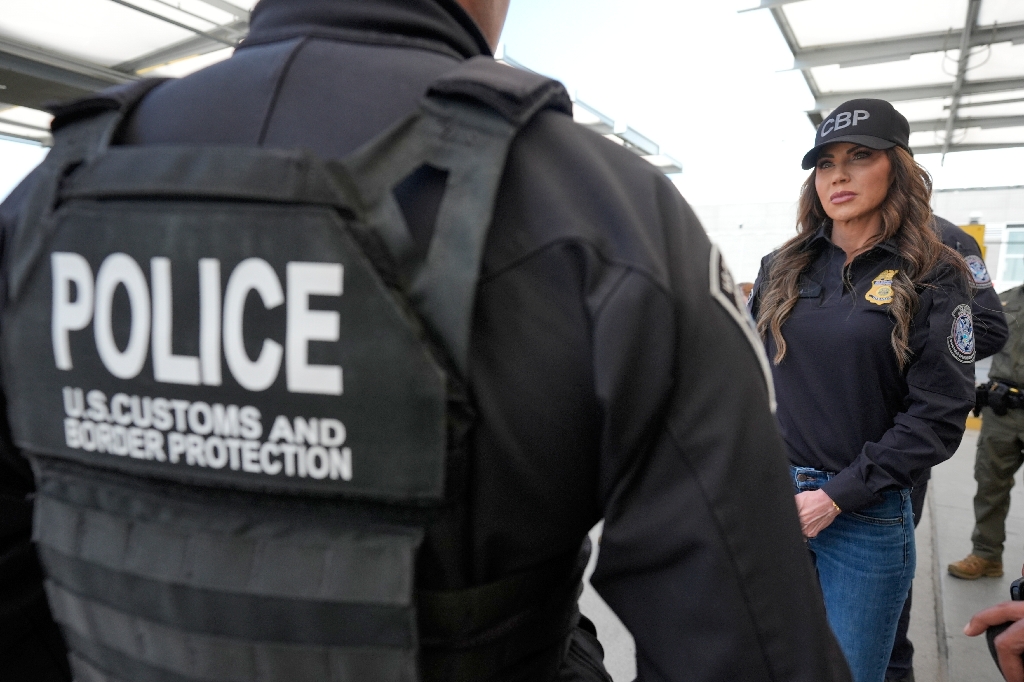(AFP) – Tens of thousands of civilians fled heavy fighting in Gaza as Palestinians on Wednesday marked 76 years since their mass displacement during Israel’s wartime creation which they call the Nakba or “catastrophe”.
Israeli forces have battled and bombed Hamas militants around Gaza’s far-southern city of Rafah, but clashes have also flared again in northern and central areas which Israeli troops first entered months ago.
The upsurge in urban combat in besieged Gaza has fuelled US warnings that Israel risks being bogged down in a counterinsurgency operation for years as guerrilla fighters stage hit-and-run attacks.
US President Joe Biden has threatened to withhold some arms deliveries over Netanyahu’s insistence on attacking Rafah, the last Gaza city so far spared a ground invasion, which is packed with civilians.
But Biden’s administration has also stressed it will continue to support Israel’s security and informed Congress on Tuesday of a new $1 billion weapons package for Israel, official sources told AFP.
The European Union urged Israel to end its military operation in Rafah “immediately”, warning that failure to do so would “inevitably put a heavy strain” on ties with the bloc, which is Israel’s biggest trade partner and the main aid donor for the Palestinian territories.
UN agencies warn that the latest fighting has newly displaced nearly one quarter of the Gaza Strip’s population this month — including about 450,000 people from Rafah and 100,000 from northern Gaza.
The sight of desperate families carrying their scant belongings through the ruins of war-scarred cities has evoked for many the events of 1948, when around 760,000 Palestinians fled or were driven from their homes.
“Your Independence Day is our catastrophe,” protesters chanted in Israel on the eve of Nakba Day at a rally joined by many Arab-Israelis, descendants of Palestinians who stayed on their land and now live as a minority in Israel.
– ‘Cycle of violence’ –
The decades-long conflict exploded into the deadliest-ever Gaza war after Hamas militants launched their attack on Israel on October 7, sparking a military response that has devastated the coastal territory.
Hamas declared in a Nakba Day statement that “the ongoing suffering of millions of refugees inside Palestine and in the diaspora is directly attributed to the Zionist occupation”.
The Islamist militant group said that “their legitimate right to return to their homes from which they were displaced cannot be compromised or relinquished”.
Israeli Prime Minister Benjamin Netanyahu has vowed to destroy Hamas and bring home the hostages the militants are still holding in defiance of warnings from top ally the United States.
An ardent supporter of Israel, Biden has clashed with right-wing hawk Netanyahu as a wave of pro-Palestinian campus protests have heightened election-year political pressure on the Democratic president.
Washington has also repeatedly urged Israel to work on a post-war plan for Gaza and supports the goal of a two-state solution, which Netanyahu and his far-right allies strongly oppose.
US State Department spokesman Vedant Patel said that, without a political plan for the future, Palestinian militants “will keep coming back” trapping all sides in “this continued cycle of violence”.
The war broke out after Hamas’s October 7 attack killed more than 1,170 people, mostly civilians, according to an AFP tally of Israeli official figures.
The militants also seized about 250 hostages, 128 of whom Israel estimates remain in Gaza, including 36 the military says are dead.
Israel’s military retaliation has killed at least 35,173 people, mostly civilians, according to the Gaza health ministry, and an Israeli siege has brought dire food shortages and the threat of famine in parts of Gaza.
– ‘Close-quarters combat’ –
The Israeli military said Wednesday that its aircraft had “struck and eliminated approximately 80 terror targets” including military compounds, missile launchers and weapons depots.
It also said its forces fighting in eastern areas of Rafah had succeeded in “eliminating terrorists in close-quarters combat and locating large amounts of weapons”.
“Intense battles” also raged amid the ruins of Gaza City in the north, where troops had killed “a large number of terrorists” in Jabaliya and were also fighting in the Zeitun area, the army said.
Hamas’s armed wing also reported that its fighters were clashing with troops in the Jabaliya area, much of which has been reduced to a hellscape of bombed-out buildings.
At least five people were killed, including a woman and her child, in two Israeli air strikes on Gaza City overnight, Gaza’s civil defence agency said.
At the the city’s Al-Ahli hospital, a wounded man, his bare chest smeared with blood, lay on a hard cot while outside several men placed a shrouded corpse in the shade of a tree.
Air raid sirens blared in areas of southern Israel near the Gaza border before the army gave the all-clear, saying it had intercepted a projectile fired from the Jabaliya area.
– ‘Civilians are starving’ –
US, Egyptian and Qatari mediators have pushed for a truce and hostage release deal for months, but the talks are now close to “a stalemate”, said Qatar’s Prime Minister Mohammed bin Abdulrahman Al-Thani.
Sporadic aid deliveries into Gaza by truck have slowed to a trickle since Israeli forces took control of the Gaza side of the Rafah crossing with Egypt last week.
Another convoy carrying humanitarian relief goods was ransacked by Israeli right-wing activists on Monday after it had crossed from Jordan through the occupied West Bank.
Washington and London condemned the attack, and EU foreign policy chief Josep Borrell said he was “outraged” about the assault at a time “hundreds of thousands of civilians are starving”.
In order to ship more aid into Gaza, the US military pledged that a temporary floating platform and pier it is building for maritime deliveries from Cyprus will be operational “in the coming days”.
© 2024 AFP




